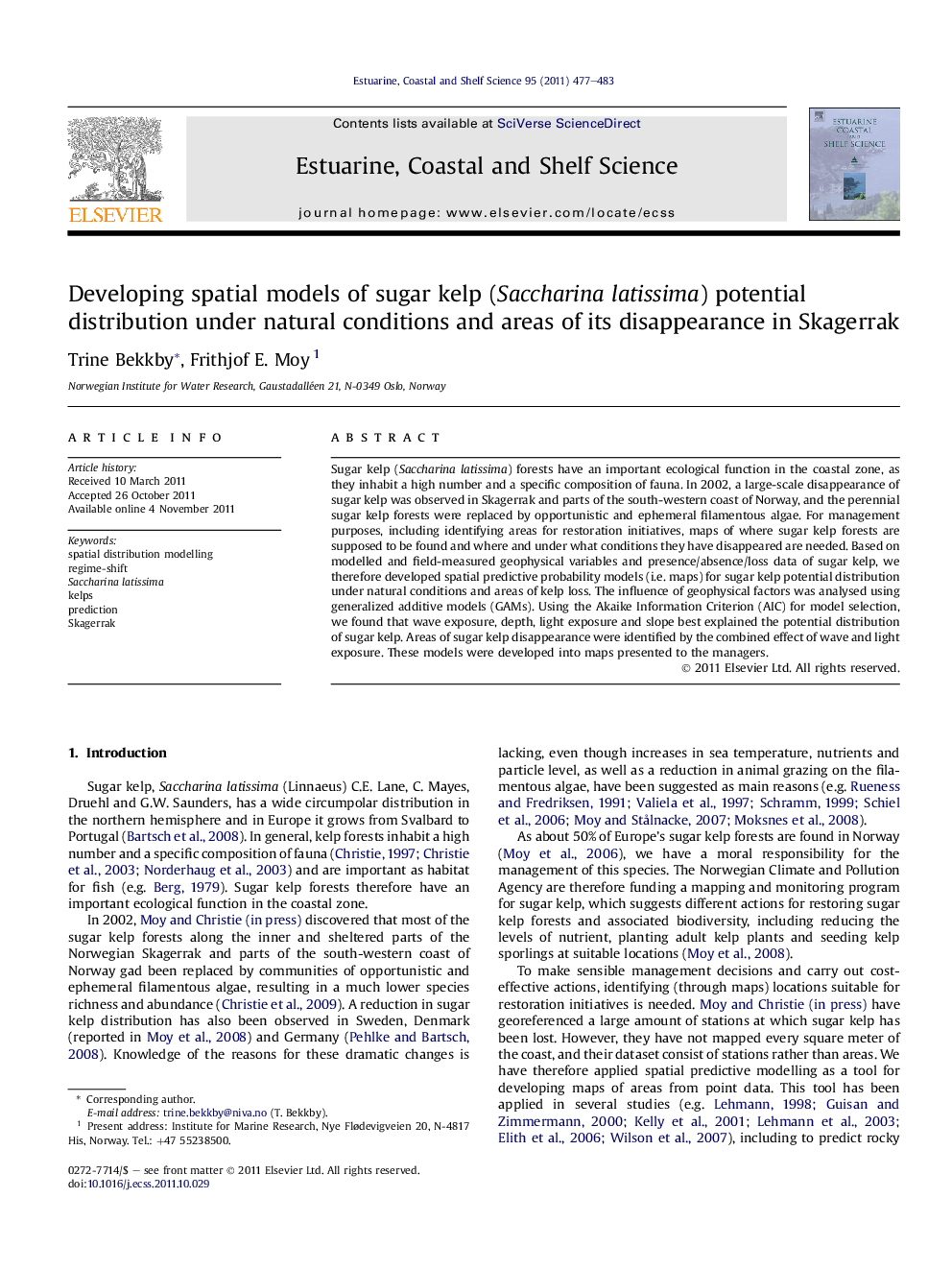| Article ID | Journal | Published Year | Pages | File Type |
|---|---|---|---|---|
| 4540353 | Estuarine, Coastal and Shelf Science | 2011 | 7 Pages |
Sugar kelp (Saccharina latissima) forests have an important ecological function in the coastal zone, as they inhabit a high number and a specific composition of fauna. In 2002, a large-scale disappearance of sugar kelp was observed in Skagerrak and parts of the south-western coast of Norway, and the perennial sugar kelp forests were replaced by opportunistic and ephemeral filamentous algae. For management purposes, including identifying areas for restoration initiatives, maps of where sugar kelp forests are supposed to be found and where and under what conditions they have disappeared are needed. Based on modelled and field-measured geophysical variables and presence/absence/loss data of sugar kelp, we therefore developed spatial predictive probability models (i.e. maps) for sugar kelp potential distribution under natural conditions and areas of kelp loss. The influence of geophysical factors was analysed using generalized additive models (GAMs). Using the Akaike Information Criterion (AIC) for model selection, we found that wave exposure, depth, light exposure and slope best explained the potential distribution of sugar kelp. Areas of sugar kelp disappearance were identified by the combined effect of wave and light exposure. These models were developed into maps presented to the managers.
